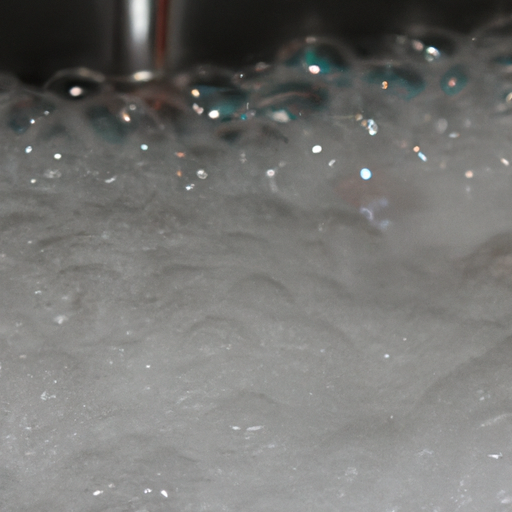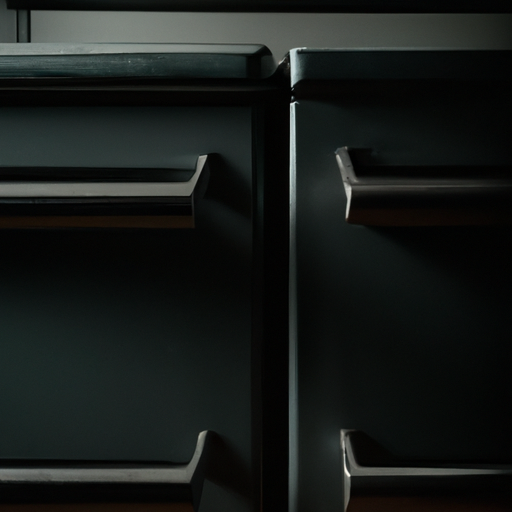Are you making these common kitchen cleaning mistakes? This guide will unveil 10 typical blunders people often commit while cleaning their kitchen. Not only will you learn what they are, but also how to avoid them, making your kitchen cleaning process more efficient and safe.
1. 'More Soap, Cleaner Dishes?' – The Misconception
Many of us believe that using more soap will result in cleaner dishes. However, this is a common misconception that can actually do more harm than good. Using excessive amounts of soap can leave behind a residue on your dishes, making them appear dull and filmy. It can also lead to a buildup of soap scum in your dishwasher, affecting its performance and longevity. Additionally, using too much soap can be wasteful and expensive, as you'll have to buy more frequently. So, next time you're doing the dishes, remember that less is more when it comes to soap. Use the recommended amount and let the dishwasher do its job effectively.
An overflowing sink with bubbles showcasing the overuse of soap
2. Are You Overlooking These Hidden Germ Hotspots?
When it comes to cleaning our kitchens, we often focus on the obvious areas like countertops and sinks. However, there are several hidden germ hotspots that often go unnoticed. One such area is the kitchen sponge or dishcloth. These seemingly innocent cleaning tools can harbor bacteria and food particles, making them a breeding ground for germs. Make sure to regularly sanitize your sponges by microwaving them for a minute or running them through the dishwasher.
Another commonly overlooked area is the cutting board. Even if you wash it after each use, it can still harbor bacteria in its crevices. Consider using separate cutting boards for raw meat, vegetables, and other food items to prevent cross-contamination. Additionally, don't forget to clean your can opener. This handy tool often comes in contact with food cans, which can leave behind residue and attract bacteria. Give it a thorough wipe-down after each use to keep it germ-free.
Doorknobs and handles in the kitchen are also frequently neglected. These high-touch areas can accumulate germs from various sources, including raw meat and unwashed hands. Make it a habit to regularly disinfect these surfaces to reduce the risk of spreading bacteria. Finally, don't forget about the inside of your refrigerator. While we often clean the shelves and drawers, we may overlook the back corners and door seals where spills and crumbs can accumulate. Take the time to thoroughly clean and sanitize these areas to maintain a hygienic kitchen environment.
3. 'Out of Sight, Out of Mind' – The Danger Behind Closed Cabinets
It's easy to forget about the hidden dangers lurking behind closed kitchen cabinets. We often assume that if we can't see the mess, it must not exist. However, neglecting to clean inside your cabinets can lead to a buildup of grime, dust, and even pests.
One common mistake is not properly organizing your cabinets. When items are haphazardly thrown in, it becomes difficult to find what you need and increases the likelihood of spills and leaks. Take the time to declutter and organize your cabinets, using storage solutions like bins or shelf dividers to keep things neat and accessible.
Another danger lies in the accumulation of expired or spoiled food. It's easy to forget about that jar of pickles or can of soup that got pushed to the back of the cabinet. Over time, these forgotten items can attract insects or mold, creating an unsanitary environment. Regularly check the expiration dates of your food items and dispose of anything that has gone bad.
Cleaning the interior of your cabinets is also crucial. Dust and dirt can accumulate over time, leading to a potential breeding ground for bacteria. Use a gentle cleaner and a microfiber cloth to wipe down the shelves, paying attention to the corners and crevices. Don't forget to clean the cabinet doors as well, as they can easily collect fingerprints and food splatters.
Finally, be mindful of the products you store in your cabinets. Chemical cleaning agents and pesticides should be stored away from food items to avoid accidental contamination. Keep them in a separate cabinet or in a high, child-proof location to ensure safety.
A gloomy image of closed kitchen cabinets, hinting at the possibility of hidden grime
4. 'A Quick Wipe is Enough' – The Illusion of Clean Countertops
Many of us are guilty of quickly wiping down our countertops and assuming they are clean. However, this common mistake can lead to a host of hygiene and food safety issues. Let's dive deeper into why a quick wipe is not enough when it comes to keeping your countertops truly clean.
- 1. Bacteria and Cross-Contamination:
A quick wipe may remove visible spills or crumbs, but it doesn't necessarily eliminate bacteria. Countertops are a breeding ground for germs, especially in areas where food is prepared. Without proper cleaning, bacteria can multiply and potentially contaminate the food you're preparing. Using a disinfectant cleaner and a clean cloth is essential to kill bacteria effectively. - 2. Stains and Residue Buildup:
Countertops can easily develop stains from spilled liquids, oils, and food dyes. A quick wipe may not effectively remove these stains, resulting in a dull and unappealing appearance. Additionally, residue from cleaning products or cooking oils can build up over time, making the surface sticky and more challenging to clean. It's important to use appropriate cleaning solutions and thoroughly rinse the countertops to prevent residue buildup. - 3. Neglected Areas:
When doing a quick wipe, it's easy to overlook certain areas of the countertops. The edges, corners, and backsplash often accumulate dirt, dust, and grime. These neglected areas can harbor bacteria and make your kitchen look unclean. Take the time to clean all the nooks and crannies of your countertops, using a soft brush or sponge to reach those hard-to-reach areas.
10 Common Kitchen Cleaning Mistakes You Should Avoid:
| Mistake | Consequence | Solution | Additional Tips |
|---|---|---|---|
| Not cleaning countertops regularly | Bacteria can build up | Clean countertops daily with a disinfectant | Sanitize cutting boards after each use |
| Using inappropriate cleaning supplies | Could damage surfaces | Read labels carefully and use the right products for the job | Test in an inconspicuous spot first |
| Not cleaning kitchen appliances often | Can harbor bacteria and odors | Clean appliances regularly, especially after spills | Clean the inside and outside of ovens and microwaves |
| Not emptying the garbage can often | Attracts pests and odors | Empty and clean the garbage can daily | Use scented garbage bags to reduce odors |
In the end, your kitchen is a crucial part of your home that requires proper maintenance. By avoiding these common cleaning mistakes, you can ensure a healthier and cleaner kitchen space. Remember, a clean kitchen is the first step to a healthy home.



